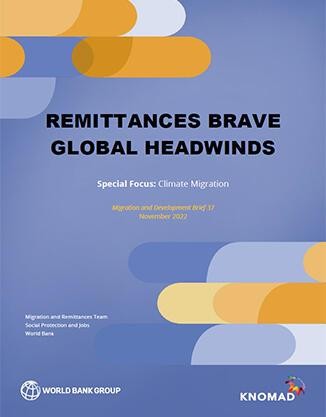Library
Remittances Brave Global Headwinds
This Migration and Development Brief (number 37 in the series) describes key developments in migration and remittance flows, and related policy and regulatory changes that have occurred since the previous brief in May 2022. The effects on migration and remittances of the Russia-Ukraine war, the COVID-19 pandemic, inflation, and other changes in the global economic environment are examined.
Remittances to low- and middle-income countries (LMICs) increased by an estimated 5 percent in 2022, to $626 billion. However, downside risks remain. Migration flows are rebounding from the pandemic induced decline of 2020–21. Refugee flows have also increased, especially due to the Russia-Ukraine war. In a special feature, the Brief notes that climate change will increase migration, mostly within countries. The poorest are likely to be most affected. National and regional development strategies need to be viewed through a climate migration lens. Considering the global nature and expected
trajectory of migration, the case for creating a global concessional financing facility for migration remains strong.
